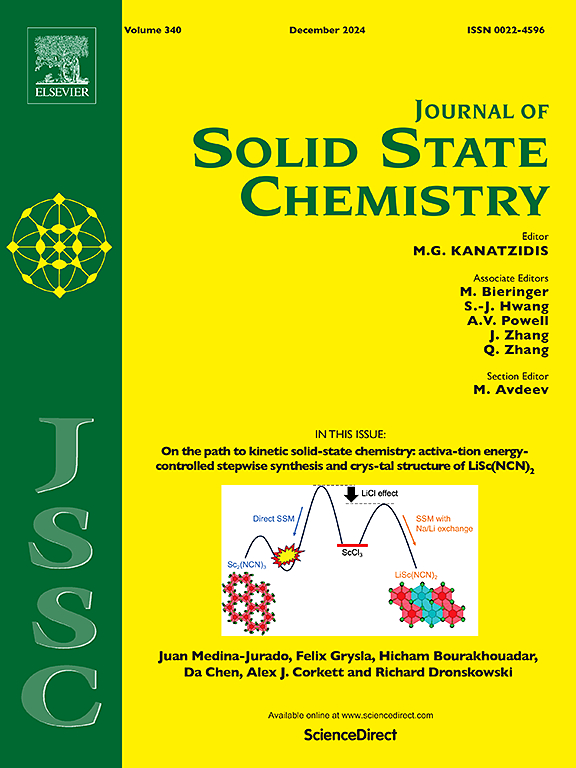基于二酮吡咯-受体结构的高效近红外光热转换共价有机聚合物
IF 3.2
3区 化学
Q2 CHEMISTRY, INORGANIC & NUCLEAR
引用次数: 0
摘要
高效的近红外(NIR)有机光热剂是有效消融癌细胞的关键;然而,它们的合成、高性能和稳定性仍然具有挑战性。在这项工作中,我们设计和合成了一种共价有机聚合物(COP), TPDA-DPP-COP,分别以四(4-氨基苯基)二胺(TPDA)为电子给体和二酮吡咯(DPP)为电子受体,通过优化的希夫碱缩合反应构建。通过实验表征和理论计算,系统地研究了TPDA-DPP-COP的形貌、微观结构、光学性质和给受体(D-A)共轭效应。得益于其扩展共轭和红移吸收,TPDA-DPP-COP在四氢呋喃(THF)中表现出优异的近红外光热转换效率,高达70.2%,在808 nm、0.5 W/cm2的激光照射下,在5 min内达到43.2℃的最高温度。该研究为开发高效稳定的近红外光热材料提供了一个有希望的策略,用于未来的生物医学应用。本文章由计算机程序翻译,如有差异,请以英文原文为准。
Diketopyrrolopyrrole-based covalent organic polymer with donor-acceptor structure for efficient near-infrared photothermal conversion
Efficient near-infrared (NIR) organic photothermal agents are crucial for the effective ablation of cancer cells; however, their synthesis, high performance, and stability remain challenging. In this work, we report the design and synthesis of a covalent organic polymer (COP), TPDA-DPP-COP, constructed through an optimized Schiff-base condensation between tetra(4-aminophenyl) diamine (TPDA) as the electron donor and diketopyrrolopyrrole (DPP) as the electron acceptor, respectively. The morphology, microscopic structure, optical properties, and donor–acceptor (D–A) conjugation effects of TPDA-DPP-COP were systematically investigated using experimental characterizations and theoretical calculations. Benefiting from its extended conjugation and red-shifted absorption, TPDA-DPP-COP exhibited an outstanding NIR photothermal conversion efficiency of 70.2 % in tetrahydrofuran (THF), reaching a maximum temperature of 43.2 °C within 5 min under 808 nm laser irradiation at 0.5 W/cm2. This study provides a promising strategy for the development of efficient and stable NIR photothermal materials for future biomedical applications.
求助全文
通过发布文献求助,成功后即可免费获取论文全文。
去求助
来源期刊

Journal of Solid State Chemistry
化学-无机化学与核化学
CiteScore
6.00
自引率
9.10%
发文量
848
审稿时长
25 days
期刊介绍:
Covering major developments in the field of solid state chemistry and related areas such as ceramics and amorphous materials, the Journal of Solid State Chemistry features studies of chemical, structural, thermodynamic, electronic, magnetic, and optical properties and processes in solids.
 求助内容:
求助内容: 应助结果提醒方式:
应助结果提醒方式:


